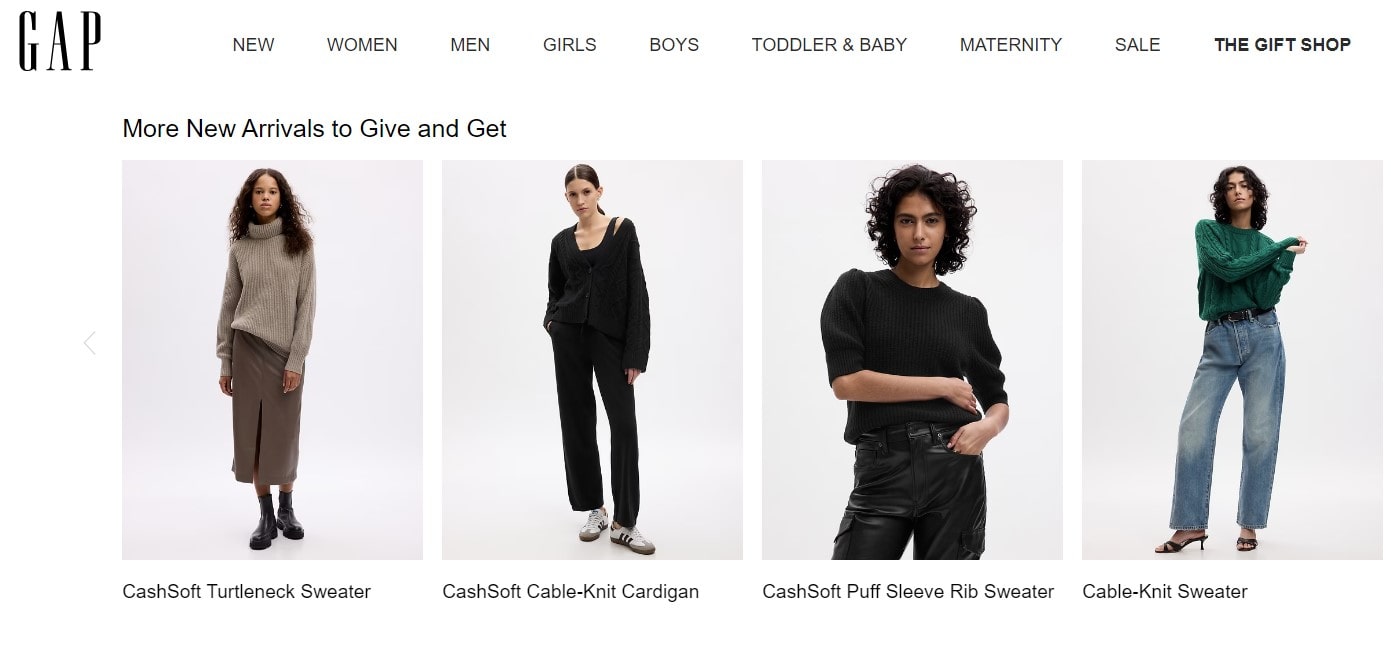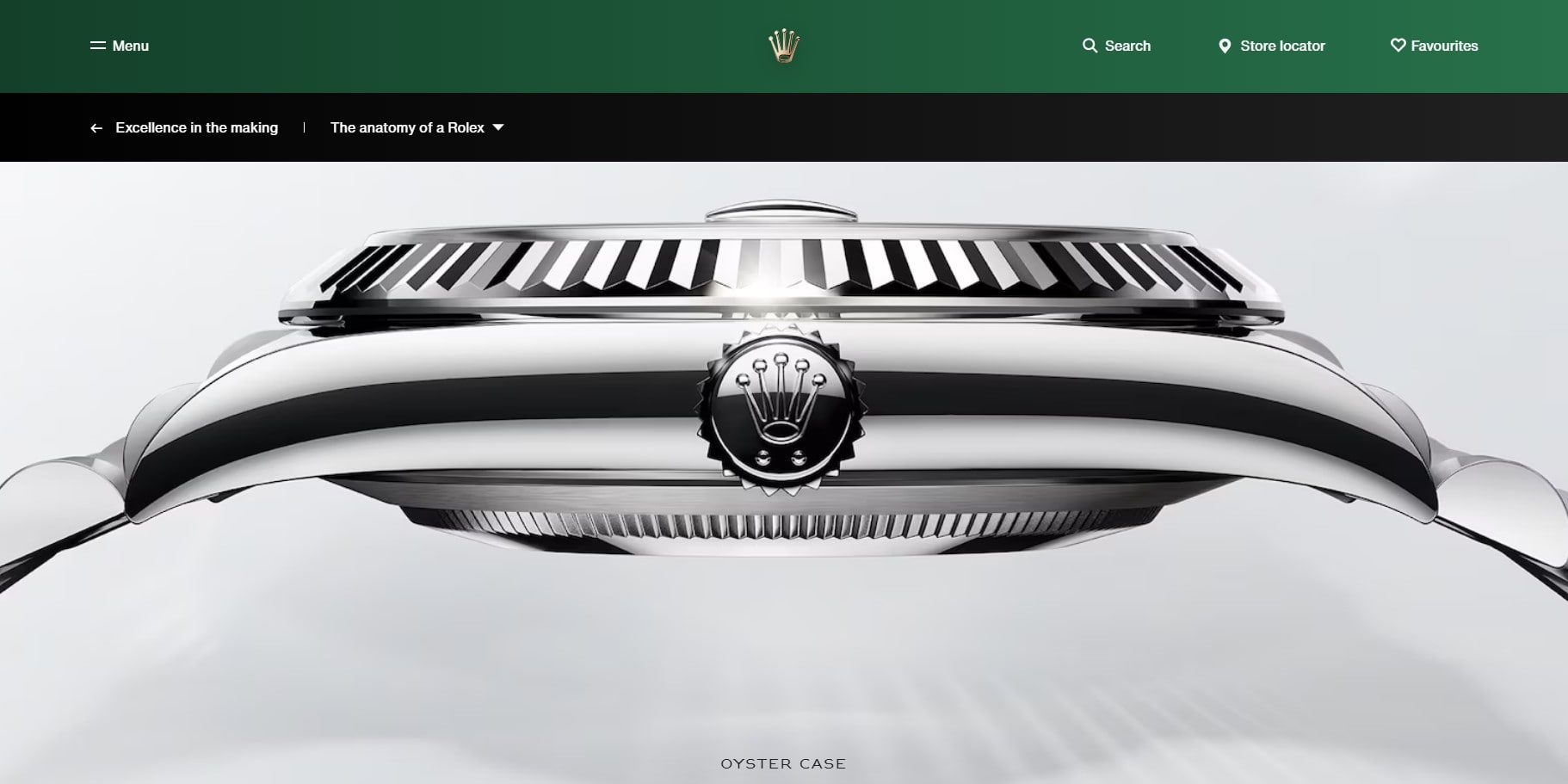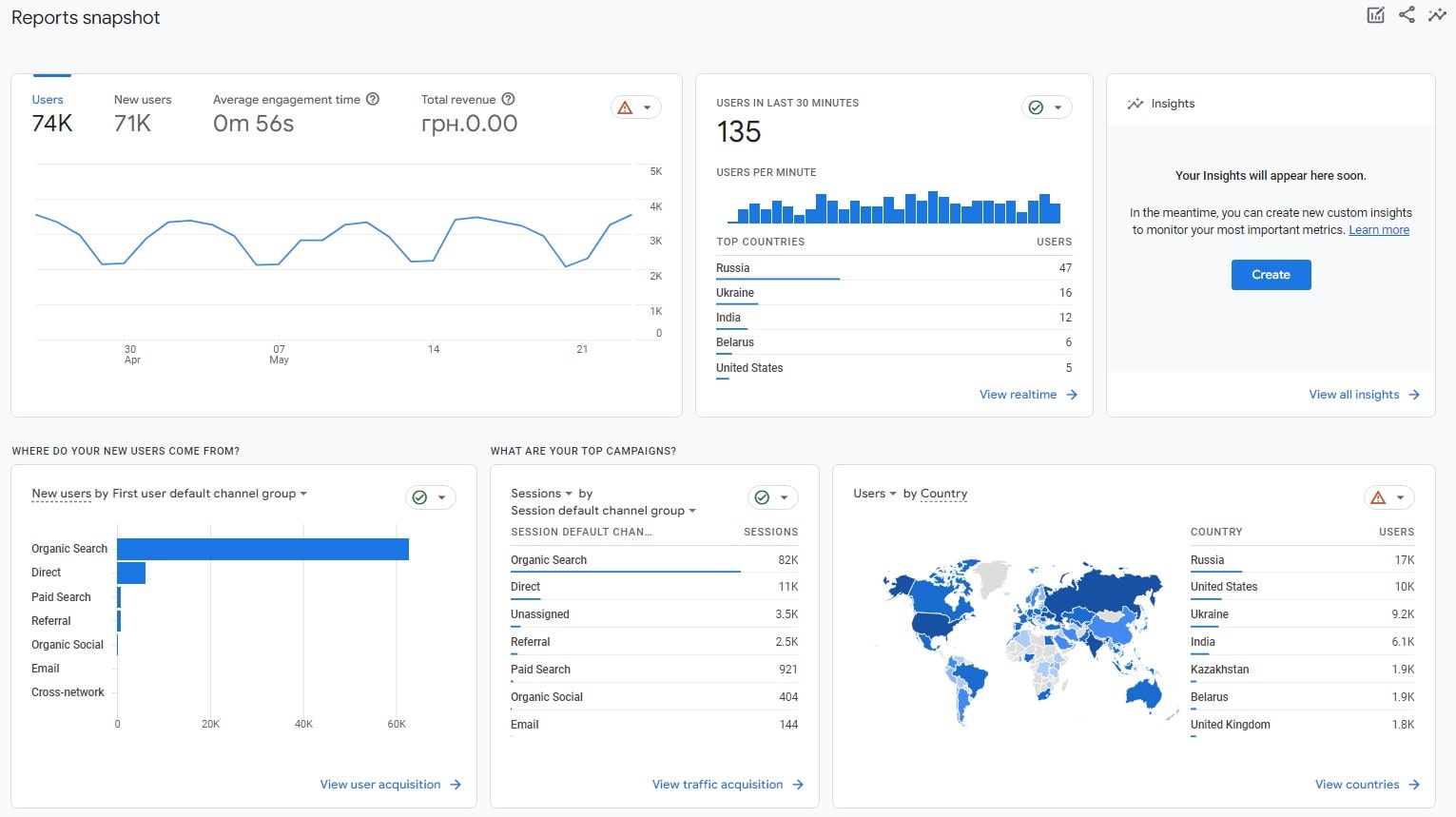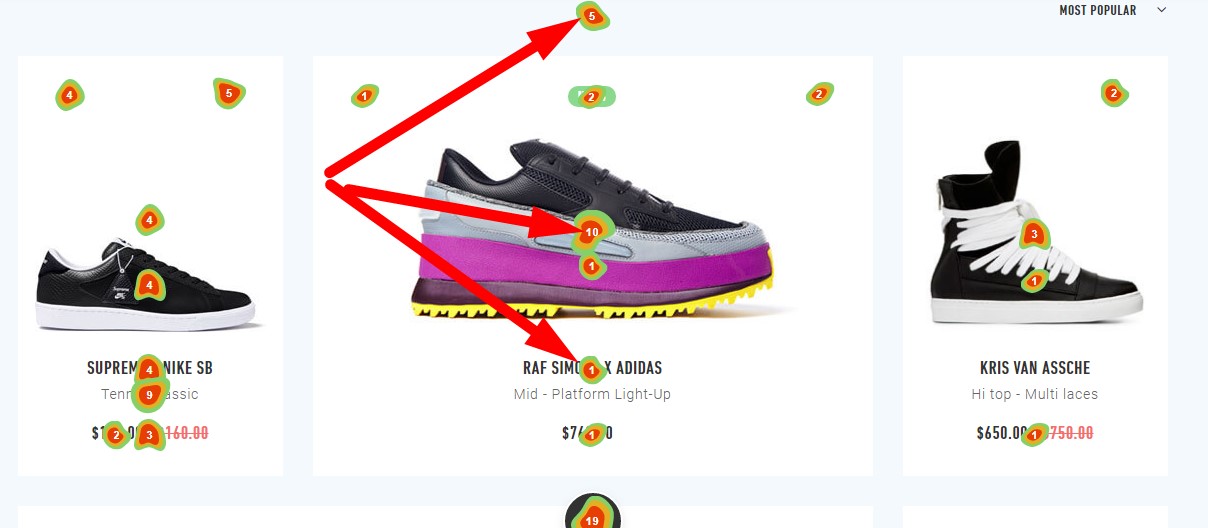In the relentless pursuit of excellence in digital commerce, data-driven marketing emerges as the powerhouse for brands seeking significant engagement and conversion upticks. By harnessing data, marketing professionals decode complex consumer behaviors, sculpting highly personalized campaigns that resonate on deeper, more impactful levels. This strategy pivots on several core components:
- Precision targeting through rich data insights
- Tailored content that echoes consumer preferences
- Real-time adjustments, leveraging data for campaign agility

Enter Plerdy, your ally in Conversion Rate Optimization and User Experience, streamlining this convergence. With data intricately woven into marketing strategies, businesses unlock unparalleled customer understanding, optimizing interactions and boosting brand loyalty. This fusion of marketing prowess and data analysis charts a course for sustainable growth, competitive differentiation, and a robust bottom line. Dive into data-driven marketing with Plerdy, where every click informs strategy, every strategy cultivates connection, and every connection drives unparalleled commerce performance. Embrace the synergy of data and marketing—fuel your brand’s journey with intelligence, insight, and the indomitable influence of a data-empowered approach. 🚀💡✨
What is Data-Driven Marketing
In the bustling intersection of marketing, data, and customer behaviors, lies the concept of data-driven marketing. This approach harnesses the immense power of data to refine marketing strategies, ensuring each campaign resonates more deeply with target audiences.
For instance, imagine a niche brand that sells handmade candles. Instead of merely advertising to a broad audience, data-driven marketing dives deep into customer preferences, purchasing behaviors, and feedback. By examining patterns and specific customer interactions, the brand tailors its marketing strategies, creating targeted campaigns that highlight scents or designs most desired by its audience.
Data-driven marketing, at its core, offers these compelling advantages:
- Precision: Marketing campaigns lean heavily on data to pinpoint exact customer needs, ensuring resources are utilized efficiently.
- Personalization: Customer experiences become tailor-made, fostering loyalty and increasing engagement rates.
- Predictability: With consistent data analysis, marketing initiatives can forecast trends, preempting customer demands and optimizing strategies in real-time.
- Performance Measurement: Post-campaign, data gives clear insights into what worked and what didn’t, paving the way for continuous refinement.
Take the fitness industry, for example. Wearable tech brands don’t just promote their gadgets. They leverage data to understand when customers are most active, their preferred workout routines, and even the music they listen to. This comprehensive understanding transforms generic marketing campaigns into personalized motivators, inspiring customers to achieve their wellness goals with the brand by their side.
In sum, data-driven marketing is not just a buzzword—it’s the bedrock of modern marketing techniques. By synergizing marketing prowess with data insights and a laser focus on the customer, brands not only amplify their message but also cultivate deeper, more meaningful relationships with their audience.
Evolution of Modern Marketing Techniques

The marketing landscape has transformed dramatically with the infusion of data, enhancing the connection between brands and their customers. Before the digital age, marketing relied heavily on broad-brush tactics – think billboards and general TV commercials. Today’s cutting-edge marketing approaches, powered by robust data, have reshaped the narrative.
Dive into the fashion industry, for instance. Previously, brands blasted the latest trends to vast audiences, hoping the appeal would catch on. Modern marketing techniques, however, sift through customer data, identifying precise preferences and shopping behaviors. By drilling down into these insights, brands now craft targeted campaigns, speaking directly to individual customer desires.
Key milestones in this marketing metamorphosis include:
- Granular Targeting: Harnessing data to zoom in on niche customer segments.
- Interactive Campaigns: Using real-time data to tweak marketing messages on the fly, enhancing customer engagement.
- Seamless Omnichannel Experiences: Integrating online and offline data for a unified customer journey.
- Predictive Analysis: Anticipating customer needs and tailoring marketing efforts to meet them head-on.
Consider the automotive sector as another illustration. Instead of generic car ads, brands now dig into customer data, unveiling preferences on car types, features, and even driving terrains. This information steers marketing efforts, pushing out ads showcasing the very vehicle features a particular customer segment covets.
In essence, marketing, analytics, and customer insights have transformed brand communication, engagement, and value delivery. It’s a dynamic dance – and those who’ve mastered the steps are reaping the rewards.
Key Components of Data-Driven Marketing
Navigating the intricate landscape of data-driven marketing, it’s essential to have your finger on the pulse of its key components. By understanding these facets, one can truly harness the potency of data, weaving it seamlessly into marketing strategies that hit the bullseye every time. As we delve deeper into this marketing terrain, it’s crystal clear that mastery over these elements not only sets the gold standard but also propels brands into the limelight of success.
Pillars of Data-Driven Marketing
Amid the buzz of the digital era, data-driven marketing emerges as a linchpin for brands aiming to foster genuine relationships with their target audience. By intertwining sophisticated data insights with marketing flair, organizations set the stage for memorable, effective campaigns.
Dive into the craft beer scene. Instead of generalized beer ads, data-driven marketing dives into consumer tastes—hoppy IPAs versus smooth stouts—to serve up promotions that truly hit the mark.
Central to robust data-driven marketing, these pillars stand tall:
- Comprehensive Data Gathering: Pulling insights from diverse avenues, from social media engagement to e-commerce interactions, to weave a full picture of consumer behavior.
- Dynamic Analysis: Sifting through data to distill patterns and trends, revealing what truly clicks with audiences.
- Tailored Outreach: Spinning data findings into customized marketing messages, ensuring every ad strikes a chord.
- Real-Time Adaptation: Keeping a finger on the pulse, tweaking marketing endeavors to mirror evolving preferences and feedback.
Consider the burgeoning world of eco-friendly cosmetics. Data-driven marketing pinpoints customers’ leanings—vegan formulations versus zero-waste packaging—and rolls out enticing campaigns that reflect these nuances.
In essence, the fusion of marketing prowess with data-driven precision sets brands apart in today’s saturated market. Those leaning into these foundational pillars are not just staying afloat but also setting a gold standard in consumer engagement.
Importance of Quality and Relevant Data

In the dynamic sphere of digital marketing, quality and relevant data take center stage. For any data-driven marketing strategy to hit its mark, the integrity and precision of data stand paramount. Why? Because shoddy or irrelevant data can steer a brand off course, diminishing the impact of even the most well-thought-out campaigns.
Reflect on the luxury watch niche. Marketing campaigns hinge on understanding the nuances of this discerning audience. The allure of a limited-edition timepiece might captivate a collector, while the craftsmanship might intrigue another. Leveraging rich, relevant data ensures marketing messages resonate with each unique segment.
Harnessing quality and relevant data offers:
- Laser-Focused Targeting: Precision in marketing campaigns, ensuring messages resonate with the intended audience.
- ROI Boost: Allocating resources more efficiently, optimizing both budget and impact.
- Brand Authenticity: Crafting messages that align with real consumer desires, building trust and loyalty.
- Adaptability: With solid data in hand, marketing efforts pivot seamlessly, keeping pace with shifting consumer trends.
Take gourmet coffee as another example. Data-driven marketing unravels intricate consumer preferences—single-origin versus blends, light versus dark roasts—and spins these insights into compelling campaigns that get coffee aficionados buzzing.
In summary, in the vast ocean of marketing, data-driven approaches serve as the compass, directing brands toward true north. But it’s quality, relevant data that ensures the compass doesn’t lead them astray, cementing their path to success.
Essential Tools for Harvesting Marketing Data

In the fast-paced digital marketing landscape, the mantra is clear: the right tools make all the difference. A data-driven marketing strategy thrives on quality data, and the tools you harness play a pivotal role in collecting, analyzing, and acting on this data.
Imagine you’re diving into the athletic wear industry. Athletes crave performance, while casual gym-goers prioritize comfort. To discern these nuances and tailor marketing strategies, you’d need robust data-harvesting tools.
Key tools that empower data-driven marketing include:
- Web Analytics Platforms: Track user behaviors, page views, and conversions. Think of platforms like Google Analytics, giving insights into user journeys.
- CRM Systems: Manage customer relationships and interactions, ensuring personalized touchpoints.
- Social Media Monitoring Tools: Gauge brand sentiment, track mentions, and analyze engagement metrics across platforms.
- Customer Feedback Solutions: Capture direct feedback, helping to refine product offerings and marketing approaches.
- Heatmap Tools: Visualize where users click, move, or hover on a site, illuminating areas for improvement.
Reflect on artisanal cheese shops as an illustration. To craft enticing data-driven marketing campaigns, shop owners might use analytics to determine which cheeses gain traction or utilize CRM systems to send personalized cheese pairing suggestions to loyal customers.
To sum it up, in the intricate dance of data-driven marketing, the right tools lead the choreography. It’s through these dynamic platforms and software solutions that brands tap into rich, actionable insights, driving their marketing rhythm to unmatched precision and success.
Advanced Techniques for Data Analysis
In the dynamic landscape of marketing, staying ahead means diving deep into data to understand customer behaviors, preferences, and trends. Advanced data analysis techniques enable businesses to fine-tune their strategies, ensuring they resonate with their target customer base.
Consider the niche of gourmet coffee beans. By harnessing sophisticated data analytics, a brand can pinpoint:
- Behavioral Patterns: Track customer purchase histories to anticipate their next craving.
- Trend Forecasting: Analyze market shifts to roll out products just as a flavor becomes the rave.
- Audience Segmentation: Break down data to tailor marketing campaigns for each unique customer group.
- Sentiment Analysis: Gauge customer feelings from reviews and feedback, tweaking offerings to enhance satisfaction.
Taking the example of luxury travel, sophisticated data tools can parse through heaps of customer feedback, helping brands to create marketing materials that truly resonate, spark interest, and compel action.
In the realm of marketing, data is the compass that points businesses in the direction of customer desires. Brands that tap into these advanced techniques not only keep their finger on the pulse but also set the rhythm, dictating market trends and customer loyalties. Harnessing data with precision ensures that marketing isn’t just a shot in the dark – it’s a masterfully orchestrated symphony that leaves an indelible mark on the customer’s mind.
Translating Data Insights into Actionable Strategies
Harnessing data insights propels marketing professionals into a realm of precise customer understanding. To truly capitalize on data’s potential, turning these insights into actionable strategies becomes paramount. For example, in the boutique coffee industry:
- Pinpointing customer preferences – Data might reveal a spike in demand for oat milk lattes in winter.
- Tailoring promotions – If data indicates most customer visits occur between 7 am to 9 am, offer early-bird discounts.
- Enhancing experience – Should data highlight a customer preference for online reservations, it’s prime time to refine that system.
To rise to the pinnacle of the marketing landscape, merely gathering data falls short. It’s the masterful translation of these data points into tangible strategies that sets top marketers apart. By zeroing in on specific customer behavior, preferences, and feedback, crafting tailor-made marketing initiatives becomes second nature.
It’s essential to remember – data serves as the backbone, the guiding light. But the real magic happens when it’s transformed into actionable steps that resonate with the customer’s core desires and needs. In a fast-paced digital age, staying on top of these data-driven strategies not only enhances customer relationships but also carves out a competitive edge in any niche. Whether it’s the intricate art of sustainable fashion or the bustling world of tech startups, data’s pivotal role remains unshaken. Harness it, interpret it, and watch as your marketing efforts take off.
Personalizing Customer Journeys with Data

In today’s dynamic business landscape, marketing becomes the beacon guiding brands to their audience’s hearts. Harnessing data, marketing professionals pinpoint individual customer preferences, drawing them into narratives tailored just for them. Take, for example, the niche of artisanal candle crafting:
- Scent Preferences: Data showcases a surge in oceanic aroma sales. Marketing campaigns can then spotlight breezy beach-inspired scents, evoking memories of waves crashing and salty air.
- Purchase Patterns: Observing data indicating customers frequently buying seasonal scents? Marketing initiatives might roll out limited-edition fragrances aligned with holidays or seasonal shifts.
- Feedback Insights: Delving into feedback provides actionable intelligence on favorite fragrances or room for improvement, shaping the creation of the next scented masterpiece.
Marketing, when intertwined with data, becomes more than just promotion—it morphs into an art. Every data point transforms into a marketing opportunity, whether it’s in sectors like handmade jewelry, gourmet chocolates, or organic skincare. By diving deep into these data reservoirs, marketing campaigns resonate, they connect, they engage. In a marketplace where brands often shout to be heard, data-driven marketing strategies sing harmoniously with their audience’s desires. This symphony of marketing and data ensures not just a fleeting transaction, but an enduring relationship rooted in understanding and trust.
Quantifying Success: ROI in Data-Driven Campaigns
In the bustling landscape of modern commerce, marketing stands as the torchbearer, illuminating pathways to genuine engagement and tangible returns. With data as its trusty sidekick, marketing maps out campaigns that resonate deeply, while still ringing the cash register.
Dive into the luxury automobile sector for an illustrative snapshot:
- Behavioral Analysis: Marketing professionals, armed with data, identified weekend driving escapades as a prime allure for high-end car owners.
- Campaign Tweaks: Harnessing this insight, marketing campaigns zoomed in on the thrill of weekend getaways, creating immersive visuals of luxury cars conquering scenic routes.
- Performance Metrics: Post-campaign, a data dive showed a spike in weekend test drives, directly tying back to the adjusted marketing efforts.
The brilliance of marrying marketing with data lies in its ability to pivot. From sustainable fashion labels to cutting-edge software solutions, data-backed marketing crafts bespoke strategies, ensuring every dollar spent works its hardest. The result? An ROI that speaks volumes and marketing endeavors that not only draw attention but also pave the way for compelling interactions and lasting brand connections. In this era, where marketing dances gracefully with data, businesses find themselves not just in the limelight but also consistently topping charts of consumer preference. Brands now, more than ever, enjoy an empowered stance, mastering the art and science of fostering relationships and scaling successes.
Navigating the Landscape of Data Privacy
In the digital landscape, where marketing strategies thrive on tailored experiences, safeguarding customer privacy becomes paramount. Balancing marketing brilliance with discretion ensures consumer trust doesn’t erode while fostering loyalty.
Diving deep into the e-commerce sector, let’s unwrap how giants like Amazon apply marketing acumen while respecting privacy boundaries:
- Personalization Sans Intrusion: Leveraging purchase histories without making consumers feel spied upon. Marketing campaigns focus on preferences without oversharing details.
- Opt-in, Opt-out Transparency: Before bombarding users with promotional emails, an authentic opt-in system reinforces trust. Equally essential is a hassle-free opt-out procedure, underscoring respect for individual choices in marketing communications.
- Data Masking in Surveys: When gathering feedback, top e-commerce sites employ data masking. This lets them gain insights for marketing optimization without risking identifiable information exposure.
A brand’s reputation hinges on the seamless blend of effective marketing and impeccable ethics. Ensuring the duo of creativity in marketing and a strong commitment to privacy isn’t mutually exclusive. In this interconnected era, embracing this duality not only sets a brand apart but also secures its position in consumers’ hearts. After all, it’s the brands that recognize the worth of trust in the marketing playbook that consistently rise above the fray.
Real-World Case Studies in Data-Driven Marketing

Diving headfirst into the bustling world of digital commerce, it’s evident that data-driven marketing tactics stand out, painting success stories like none other. These strategies, rooted in hard facts and actionable insights, reshape how brands connect, engage, and ultimately win over their target audiences.
Consider a couple of standout instances that brilliantly encapsulate the prowess of data-backed marketing:
- Netflix’s Tailored Recommendations: Harnessing viewer habits, Netflix masterfully crafts individualized watch-lists. This marketing stroke of genius keeps users hooked, ensuring they always find something binge-worthy, driving up subscription retention.
- Starbucks’ Loyalty Program: Analyzing purchase patterns, Starbucks offers rewards that resonate with individual customer preferences. This marketing strategy not only boosts sales but also reinforces brand loyalty, making every sip count.
It’s evident that when marketing taps into the rich veins of data, the results can be transformative. Brands no longer shoot in the dark. Instead, they craft messages that resonate, offers that entice, and campaigns that captivate. This methodical approach to marketing, grounded in evidence and fine-tuned through analysis, paves the way for triumphs in the digital age. Brands that harness this marketing methodology ensure they aren’t just another voice in the cacophony but a resonating echo that lingers long after the message is delivered.
Best Practices for Maximizing Data Utility
In today’s fast-paced digital landscape, mastering the art of using data is essential for marketing mavens. Every byte of information can potentially turn the tide, making campaigns more effective and audience engagement more meaningful. But, with an avalanche of data at one’s fingertips, how does one ensure its optimal use for marketing endeavors?
Consider these tried-and-true tactics:
- Segment and Conquer: Splitting your audience into smaller, well-defined groups allows for tailored marketing strategies. For instance, fitness brands might separate marathon runners from casual joggers to offer specialized product suggestions.
- Continual Refinement: As trends shift and preferences evolve, it’s crucial to keep tweaking your marketing approaches. High-end fashion brands often adjust their online ad visuals seasonally to reflect fresh collections.
- Harness Predictive Analytics: Anticipating consumer behavior can be a game-changer. Take grocery stores – by predicting shopping patterns, they can push timely discounts on perishable items, ensuring minimal waste and maximum sales.
- Value Transparency: In an age where data breaches run rampant, make sure your audience knows their information is in safe hands. Ethical fashion labels, emphasizing sustainability, often win trust by openly sharing how customer data informs eco-friendly initiatives.
Harnessing data effectively, while staying true to marketing goals, can spell unparalleled success. By merging the analytical with the creative, brands can resonate deeply, ensuring messages aren’t just heard but are also acted upon.
Looking Ahead: Future Trends in Data-Driven Marketing

Peering into the horizon of marketing, it’s evident that data will continue to be the cornerstone of trailblazing campaigns. As marketers, embracing this data-centric evolution ensures not just staying in the race but leading it.
Let’s unpack some anticipated shifts:
- Personalization Peaks: In the coming years, expect marketing strategies to reach a level of personalization that might seem straight out of science fiction. For example, beauty brands will utilize skin scans to recommend products, ensuring an almost bespoke skincare regimen.
- Virtual Reality Gets Real: Immersive marketing campaigns are set to rise, with brands taking consumers on virtual journeys. Think about travel agencies offering simulated walks through picturesque locales before you book your trip.
- Sustainability Stamps its Mark: As environmental concerns escalate, marketing narratives will heavily pivot towards sustainability. Picture cosmetic brands emphasizing their zero-waste packaging and water-saving production processes.
- Voice-activated Assistants Dominate: With smart homes becoming standard, voice-activated marketing will surge. Envision book publishers suggesting titles or playing audiobook snippets as you mull over what to read next, all through voice interactions.
To leverage these trends, marketers must continuously evolve, ensuring their strategies are data-informed and audience-centric. Merging innovation with intuition will create campaigns that resonate, compelling audiences to engage and act. The next chapter in marketing beckons – and it’s digitally brilliant, data-drenched, and decidedly dynamic.
Conclusion
In the digital age where every click and scroll tells a story, understanding the key components of data-driven marketing has never been more pivotal. By intertwining data insights with marketing expertise, brands craft tailor-made narratives that resonate with their audience’s unique preferences and behaviors. Just think of your website’s analytics as a goldmine: every visitor interaction – from cookies saved during their browsing sessions to the specific pages they frequent – shapes the broader picture of their preferences. Delving deep into these sessions, businesses now have the tools to customize experiences for each visitor, elevating every interaction to an art. Plerdy, with its robust SEO & UX analysis capabilities, serves as a hub for marketers striving for this very excellence. This tool not only helps in pinpointing areas of improvement but also in implementing strategies to optimize visitor interactions. It’s clear that by harnessing the synergy between data and marketing, brands can craft strategies that are not just effective, but also hyper-relevant. So, whether you’re a newbie in the industry or an established marketing maven, there’s always room to learn, innovate, and leverage the myriad opportunities that data-driven marketing presents. Dive into the treasure trove of insights, and let the data do the talking! 📊💡🚀
